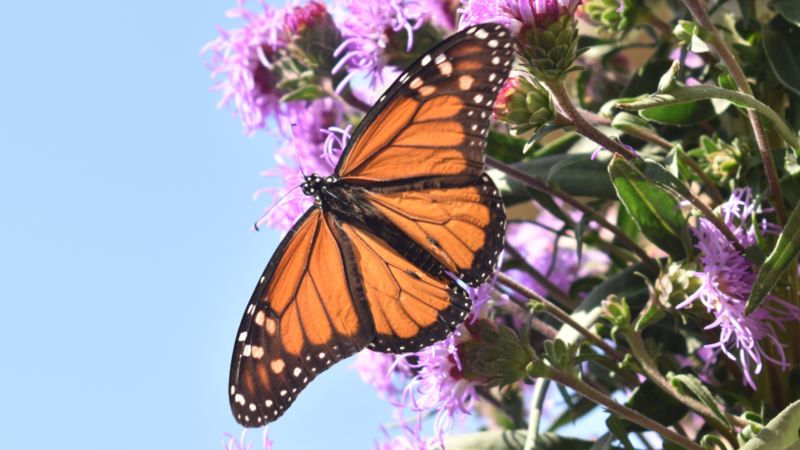
Photo by Elizabeth Egan, MJV
A new grant from Canadian Pacific Kansas City (CPKC) will help the Monarch Joint Venture (MJV) expand pollinator conservation efforts by enhancing habitat restoration, translating educational resources into Spanish, and increasing community engagement opportunities that benefit monarchs and other pollinators. This new CPKC grant enables MJV to build on existing successes and reach even more communities, improving access to resources and demonstrating effective pollinator-friendly practices. With these enhanced efforts, MJV aims to strengthen both local and regional conservation impact, create new opportunities for public engagement, and provide models for sustainable habitat management that can be replicated across the continent.
Grant-Funded Projects
Pollinator Habitat Enhancement & Greenhouse Restoration at Prairie Oaks
Located in Belle Plaine, Minnesota, MJV’s Prairie Oaks Campus is becoming a hub for conservation, research, and education. Thanks to CPKC’s support, MJV will restore a three-acre oak savanna, a rare and threatened habitat, and rehabilitate an on-site greenhouse to grow up to 300 flats of native plants each year. This space will supply local restoration projects, serve as an educational resource, and connect hundreds of people annually with pollinator-friendly practices.
Translation of Regionally Specific Handouts
MJV is curating regional or state-level handouts that provide specific guidance, information, and resources for various regions around pollinator habitats, regional milkweed, gardening for monarchs, community science opportunities, and invasive species. These handouts are currently available only in English, but will be translated into Spanish, ensuring these valuable resources reach more communities across North America and are accessible to Spanish-speaking audiences.
Translation of Activity Workbooks for Pre-K and School-Age Children
MJV’s monarch-themed activity books for preschool and elementary children will also be translated into Spanish. After translation and printing, these materials will be sold on MJV’s website and distributed to elementary classrooms throughout the U.S. and Mexico through MJV’s partnerships with the Symbolic Monarch Migration, partner organizations, and Profauna in Mexico.
We are deeply grateful for our continued partnership with CPKC and for their commitment to environmental stewardship, as well as their ongoing support of monarchs and pollinators. Together, we’re enhancing habitat restoration, expanding educational access, and strengthening community engagement, ensuring monarchs and other pollinators thrive across North America.
About CPKC
CPKC was formed in 2023 through the combination of two historic railways – Canadian Pacific (CP) and Kansas City Southern (KCS), and operates the first and only transnational rail network in North America, spanning 20,000 miles across Canada, the U.S. and Mexico. In 2021, KCS joined MJV’s partner network. In 2022, CP and KCS partnered with GATX, Monterrey Metropolitan Rotary Club, and NASCO for the Save the Butterfly 60,000 Tree Challenge North American Boxcar Tour. The project raised awareness of the monarch butterfly and over $125,000 to plant 60,000 Oyamel fir trees at El Rosario Monarch Butterfly Sanctuary in Michoacán, Mexico, to help re-establish the monarch population. Learn more about CPKC at cpkcr.com/sustainability
About Monarch Joint Venture
The Monarch Joint Venture (MJV) is a national conservation nonprofit that implements science-based conservation actions for monarch butterflies and other pollinators through four main pillars: habitat, science, education, and partnership. Conservation actions are organized in a regularly updated Monarch Conservation Implementation Framework, which serves as a guide to conservation planning for individuals, partners, and other interested stakeholders nationally. As a leader in monarch conservation, the MJV supports conservation planning and implementation efforts on a broad scale by facilitating information sharing, partnership building, and carrying out identified conservation priorities throughout the monarch’s migratory range.
